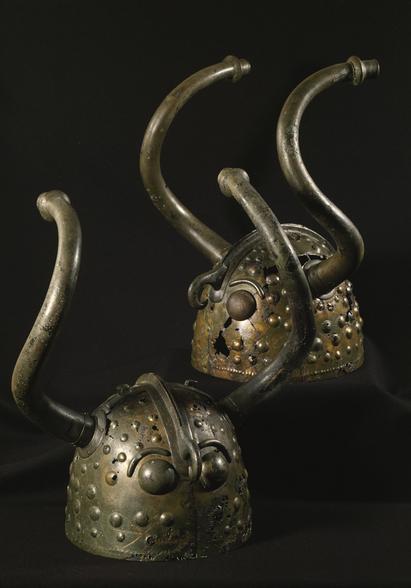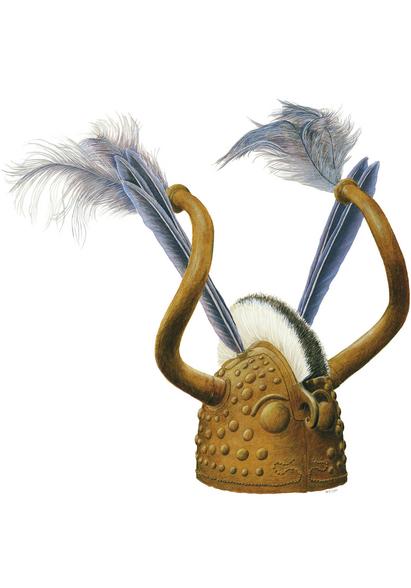Helmets embellished with feathers and horsehair
Around 1000 BC, in the Bronze Age, two bronze helmets decorated with bull’s horns were sacrificed in a bog near Veksø (Viksø), west of Copenhagen. The helmets were not meant for warriors; they were part of a priestly costume, and were used in the performance of religious rituals.
On top of each helmet is a crest. The crest is split, most probably in order to hold a decorative attachment.
Presumably these helmet crests held a mane of horsehair, known also from later Greek and Roman helmets. On each side of the central crest are a couple of pierced studs, analyses of which have shown that a feather had been attached, perhaps from a falcon or an eagle. The helmets are also equipped with the beak of a bird of prey.
Through such references to a number of holy animals, such as a bird of prey, a bull or a horse, the Bronze Age priests could, when they wore the helmets, establish connections to another world.


